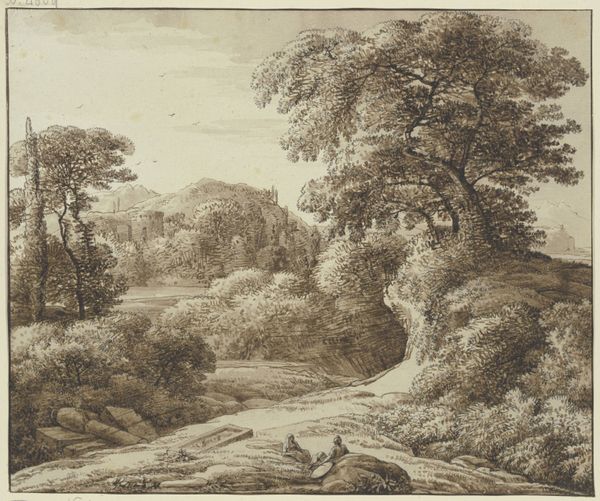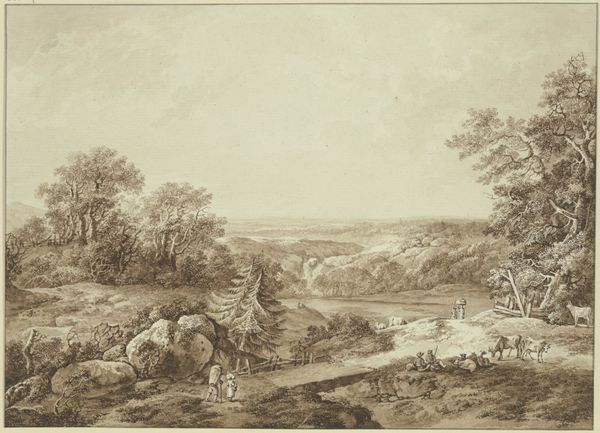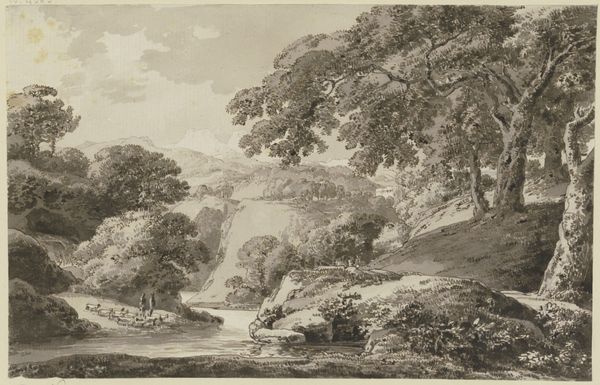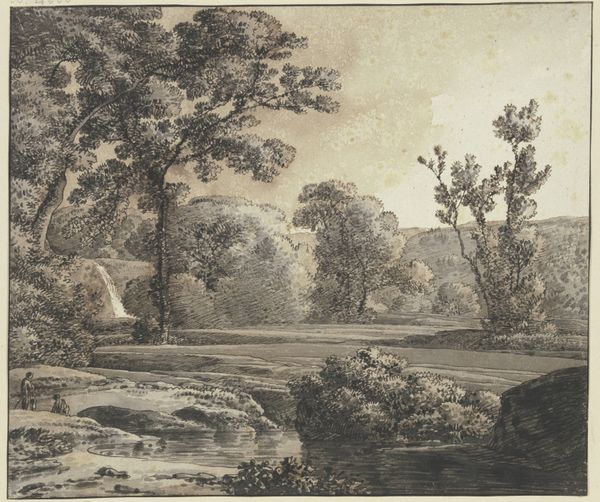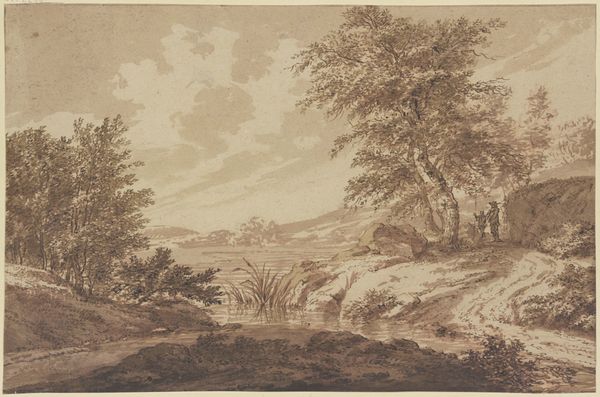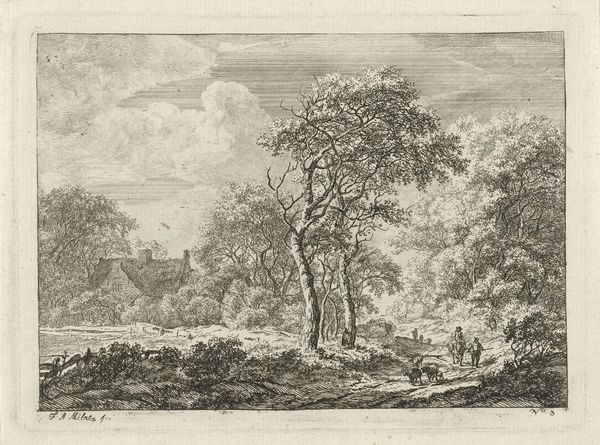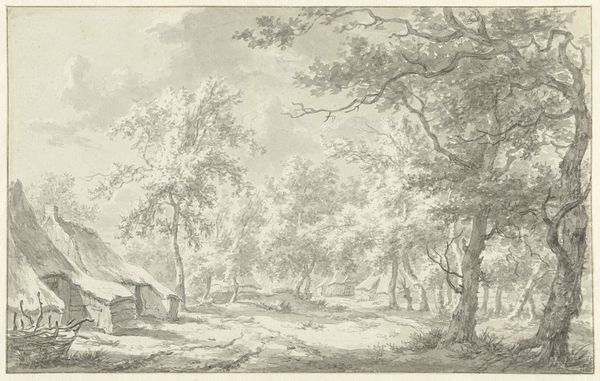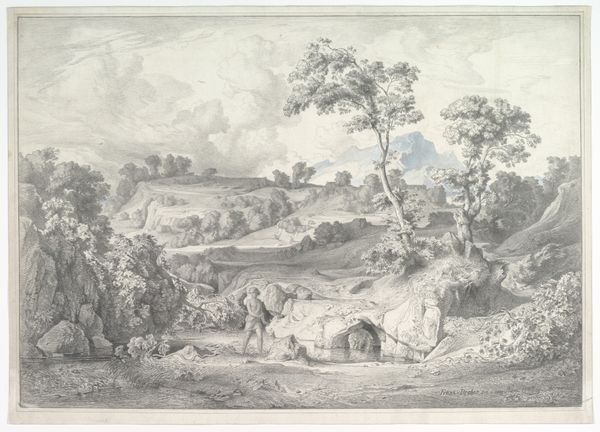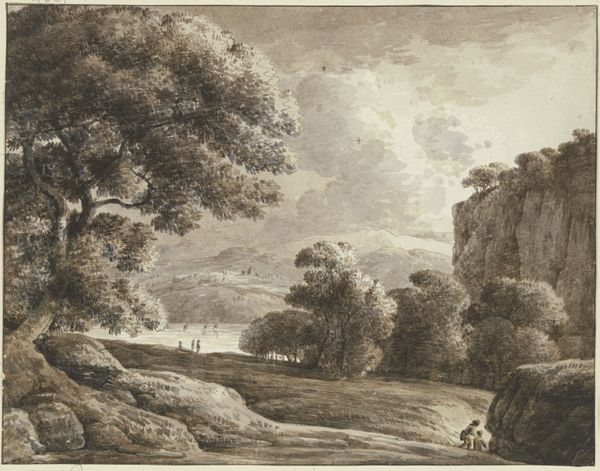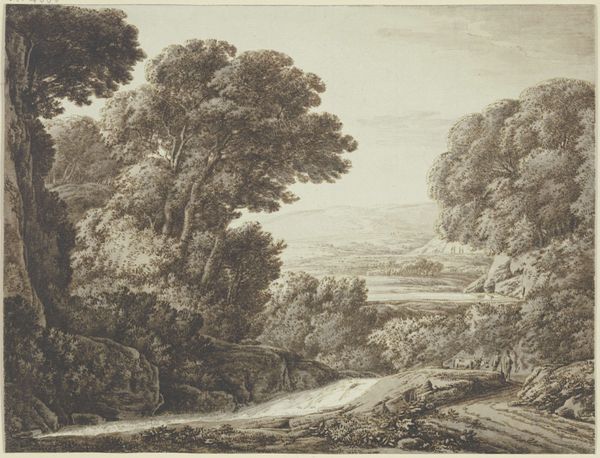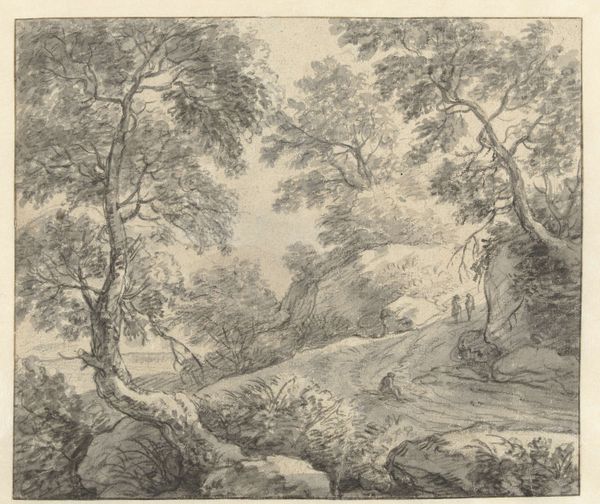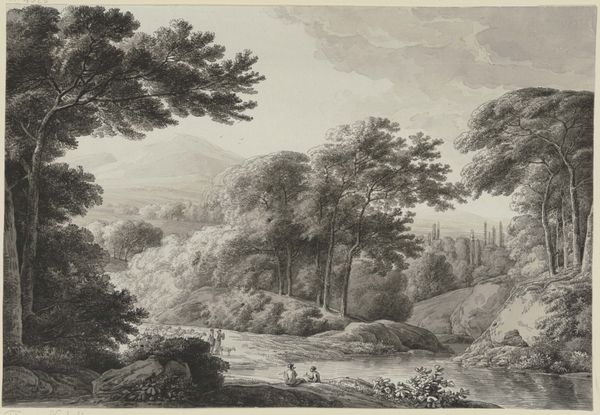
drawing, paper, ink, pencil
#
drawing
#
landscape
#
paper
#
ink
#
romanticism
#
pencil
Copyright: Public Domain
Curator: Here we have Heinrich Wüest’s drawing, “Mittelgebirgslandschaft mit Bach, rechts Viehherde,” created with ink and pencil on paper. Editor: Immediately, the interplay of light and shadow evokes a sense of Romantic melancholy. The cloudy sky dominating the scene, juxtaposed with those peacefully grazing cows… it creates a fascinating tension. Curator: Wüest, aligned with the Romantic movement, often used landscapes to explore themes of nature’s sublime power, but also its vulnerability in the face of encroaching modernity. We can read the idyllic scene as a coded message. The way that humble fence runs through the scenery makes me ask; who built it, and for what and who are they restricting? Editor: That's an astute observation! I am compelled by those livestock figures to the lower right corner of the piece. There’s a visual echo there from countless pastoral scenes – that archetypal symbol of peace and prosperity that resonated throughout the continent across different political movements. It might be interpreted as a sign of naive longing from a population uprooted during the recent revolutionary wars. Curator: It could also be understood as an allusion to traditional rural life and power structures then at the cusp of monumental change. The natural world served not only as an aesthetic retreat, but it bore a commentary on social structures as well as unspoken, sometimes contradictory meanings of those changes in artistic depictions of labor and society. Editor: I appreciate the level of detail Wüest employs – those seemingly simple trees carry remarkable weight, each leaf defined, imbuing them with almost allegorical importance. It's hard to resist a sense of timelessness captured in the artist's expert lines, as the pastoral setting can simultaneously give connotations of liberty, nature, wealth and progress depending on social perspective. Curator: This intersectional lens is vital when encountering artworks of this period! We bring an analytical methodology by challenging traditional views and including other frameworks from different philosophical traditions in that analytical process. It helps us understand and confront the societal power dynamics present within our cultures' visual history, even within a quiet landscape. Editor: It truly invites a closer, critical inspection to draw its essence of hope and concern for humanity's past, present, and future.
Comments
No comments
Be the first to comment and join the conversation on the ultimate creative platform.
